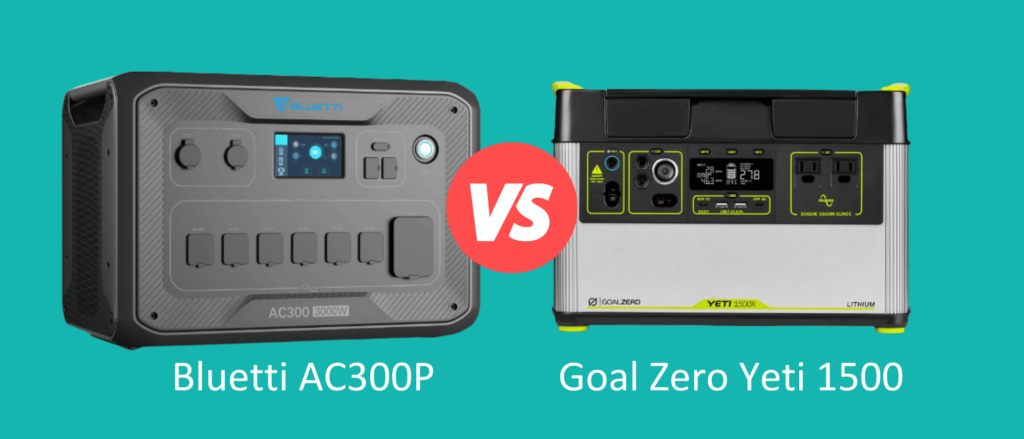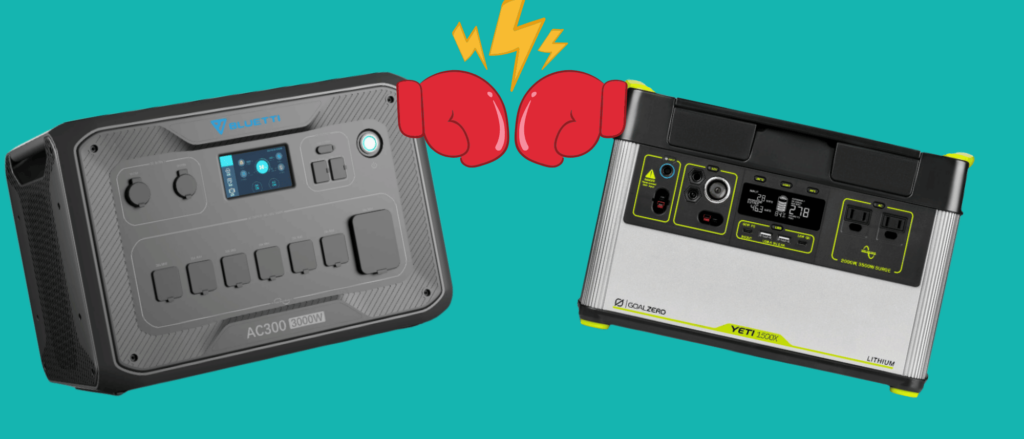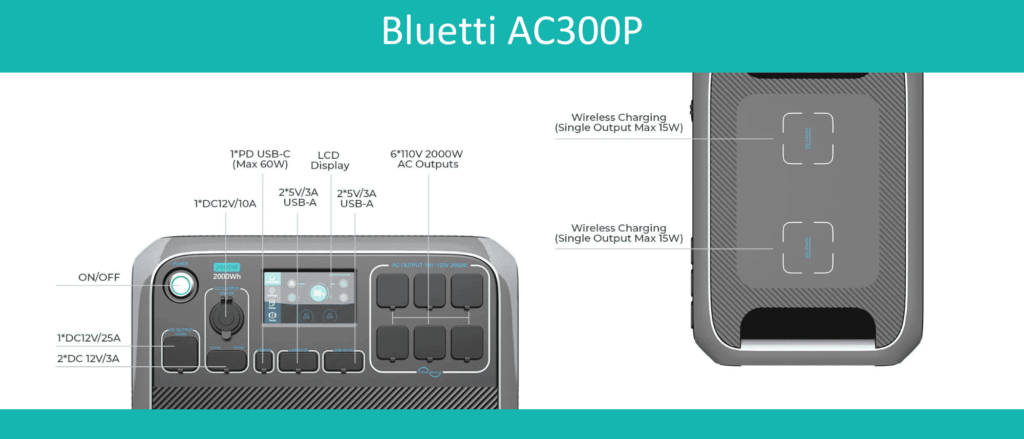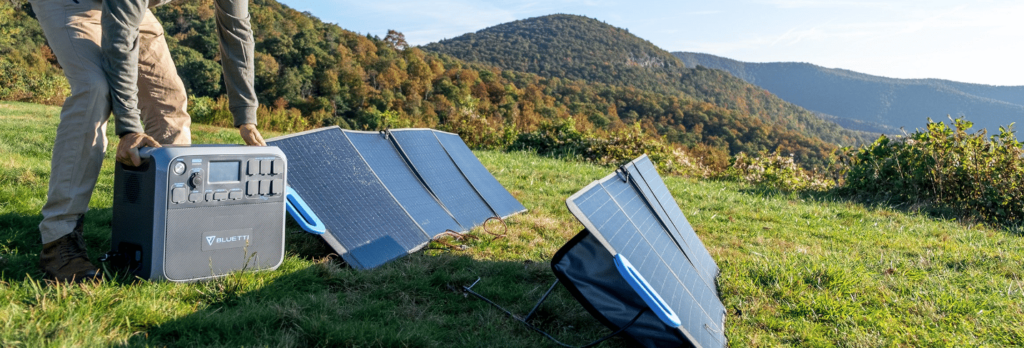
Grid Outages and the Need for Backup Power
In the aftermath of Hurricane Fiona and its devastating effects on the Atlantic Provinces, we’ve been getting a lot of questions about battery backup systems. Some people have been without power for several days as Nova Scotia Power cleans up the debris and works hard to get people reconnected to the grid.
In general, when people ask about battery backup to add to their solar energy system, we still steer people toward traditional fossil fuel generators for reliable power supply in the event of a grid power outage. This is because the cost of the whole house batteries like the Tesla Powerwall, or the LG Chem is still quite high. These solutions will typically run between $18-22k on top of the cost of your solar energy system.
That being said, if your needs are fairly light and all you’re looking for is some basic power backup to get you through a 24 hour period (or longer depending on your loads), there are now a few economical battery-based options on the market worth diving into. Given how “plugged in” we are these days, I believe that all homes should have some ability to at least charge devices and light loads in the event of a power outage.
First, let’s keep expectations in check. These all-in-one battery systems are going to run some light loads – an efficient fridge, device charging, a few lights, baby monitor, modem, etc. – for a limited amount of time (roughly 24 hours if there is no solar input charging). They will not provide all the answers to your storm preparedness needs, and cannot run heating loads for any significant amount of time. If you’re looking for something more substantial for solar plus storage, we’ll be posting about other options in the near future, and discussing how they compare to traditional generators.
If you’re interested in this low-cost, limited but simple solution, please read on!

Goal Zero Yeti 1500 vs. Bluetti AC200P
Both Goal Zero and Bluetti are companies that are looking to solve the same problem: How do we create an all-in-one plug and play solution for portable battery backup? These quiet generators include a battery, inverter, solar charge controller, battery management system, and all the relevant input and output ports in one convenient, portable package.
I personally have used a Goal Zero unit in a camper van build and am very pleased with the product. Bluetti is an upstart company that is making inroads into the Canadian market, with some impressive looking equipment. Let’s compare the strengths and weaknesses of each model.

Physical Units
Let’s compare the physical construction of each unit:
| Unit | Goal Zero 1500 | Bluetti AC200P |
| Weight (lbs) | 45.64 | 60.6 |
| Dimensions (length x width x height in inches) | 15.25 x 10.23 x 10.37 | 16.5 x 11 x 15.2 |
| Cell Chemistry | Lithium Ion NMC (nickel manganese cobalt) | Lithium Iron Phosphate |
| Output – AC Ports | 2 | 6 |
| Output – USB-A Ports | 2 | 4 |
| Output – USB-C Ports | 2 | 1 |
| Output – 6mm Ports | 2 | 2 |
| Output – 12V High Power Port (Anderson Powerpole – APP) | 2 | None |
| Output – “Car” port 12V x 10A | 1 | 1 |
| Output – Wireless charging pad | None | 2 |
| Output – “RV” port 12V x 25A | None | 1 |
| Input – 8mm wall charging port (150W max) | 1 | 1 |
| Input – High Power charging port (Anderson Powerpole) | 1 | None |
| Input – AC adapter (400W max) | None | 1 |
| Input – Solar to “cigarette” lighter plug | None | 1 |
Looking at the two units side by side there are some notable differences. The Goal Zero unit is a bit slimmer and smaller. It weighs nearly 15 lbs less than the Bluetti model, so it’s much easier to manage and move around the house. They both have a pleasing design centered around high functionality. The Bluetti model looks a bit more durable, and I like the covers for the ports. While neither unit should be used in wet conditions, the Bluetti model looks as though it can withstand more rugged usage and environments than the Goal Zero.
In terms of the type and availability of ports, the Bluetti model clearly stands out front. There are six AC ports compared to Goal Zero’s two. Both have USB A & C ports, but Bluetti also has the wireless charging pads on top which is a great touch.
Also, Bluetti uses aviation plugs for the higher wattage solar input, compared to Anderson Powerpole used by Goal Zero. This to me seems like a huge advantage. I had never heard of Anderson Powerpole connectors before purchasing my first Goal Zero back in 2017, and to be honest I wish I’d never come across them. The Anderson Powerpole connectors are very difficult to work with and they tend to pull out of the socket easily. They also break easily on the socket end, which can be a real nightmare. For the input socket availability I’m also giving Bluetti the win.
Verdict: Although it’s bulkier and heavier, I am giving the clear win to Bluetti for the physical construction of the unit.

Battery Capacity and Lifespan
One of the most important factors when choosing a battery backup system is the capacity of the battery. In other words, how much energy can you store inside it to use later? Let’s take a look at how the two stack up:
| Unit | Goal Zero 1500 | Bluetti AC200P |
| Battery Capacity (Wh) | 1516 | 2000 |
| Cell Chemistry | Lithium Ion NMC (nickel manganese cobalt) | Lithium Iron Phosphate |
| Lifecycles (discharge to 80% capacity) | 500 | 3,500 |
The two units are quite different in this respect. The Bluetti has a bigger storage capacity by nearly 25%, which is a huge advantage compared to the Yeti 1500.
The battery cell chemistry is also different with the Goal Zero using NMC cells (similar to Tesla or LG Chem) while the Bluetti uses the LFP cells (similar to Enphase or SonnenCore) – you can read up on the differences here. While both cell types have similar performance, the LFP cells have a longer lifespan and a higher safety rating. The lifespan is reflected in the lifecycles claimed by each manufacturer where the Bluetti AC200P claims to last 7x longer than the Goal Zero 1500.
Also, if you think that you’d like to future-proof your purchase by adding the ability to chain additional batteries, Bluetti really seems to have it figured out. You can upgrade to the Bluetti AC200MAX for an additional $400 which has all the same features as the AC200P, but also allows for easy expansion with up to two more battery modules, maxing out at 8,192 Wh total capacity!
For reference, that’s still just over half of the capacity of the Tesla Powerwall 2 (14,000 Wh), so it’s still not the same as the big, whole house units, but pretty cool to have it in a portable all-in-one package.
Verdict: Big win for the Bluetti unit when it comes to battery capacity and lifespan.

Inversion Capabilities
Energy storage in a battery is in DC electricity. For most people looking for a battery backup for their home in the case of a storm, we’re looking to run AC loads from the battery (ex: fridge). Therefore we need an inverter to take the DC stored energy and flip it over to usable AC power available for our needs. Let’s take a look at how the inverters in each unit compare:
| Unit | Goal Zero 1500 | Bluetti AC200P |
| Inverter Type | Pure Sine Wave | Pure Sine Wave |
| Capacity (watts) | 2,000 | 2,000 |
| Surge Capacity (watts) | 3,500 | 4,800 |
For inversion capabilities, the units are fairly close. They both have the same capacity (2,000 watts). This means that trying to draw any more than that for a few seconds will trip the internal “breaker”. The Bluetti unit has a higher surge capacity, which may be important, depending on your loads. Some loads like a well pump have a startup “surge” draw before settling into a more measured pull of power. The Bluetti has a higher ability to handle a surge than the Goal Zero.
Verdict: Bluetti’s surge capacity makes it the winner, although it’s not likely most people need a higher surge capacity than what the Goal Zero provides. Slight edge to Bluetti on this one.

Charging Capabilities
OK so we’ve talked about capacity and discharge abilities, now let’s talk about how quickly and easily we can put power back into the battery units. I imagine many people will just keep the battery plugged into the wall at all times so that in the event of a grid outage you’re topped up and ready to go, and you’ll just use the available power in the battery until it’s gone.
For others, installing a few solar panels on the roof of the home or perhaps just having one portable to move around on a back deck and direct toward the sun as necessary will help to keep the battery unit charged in the event of a multi-day outage.
For me personally, knowing how much solar can be sent to the battery is a really important factor, and can provide the solar backup power that is so sought after. Let’s take a look at the two:
| Unit | Goal Zero 1500 | Bluetti AC200P |
| AC Port Max Wattage | 150 | 400 |
| AC Port Charge Time (hours) | 14 | 6 |
| Solar Max Wattage | 600 | 700 |
| Solar Charge Time (hours) | 5 | 4 |
The out-of-the-box AC charger with the Goal Zero units is slow. Painfully slow. At only 150 watts it takes 14 hours to charge the battery from the grid. That being said both the Goal Zero and the Bluetti units have the ability to increase charging capacity with some additional equipment available for purchase.
Verdict: Slight edge to the Bluetti AC200P on this one due to the higher wattage AC port, and the additional 100 watts of solar charge capacity.

Monitoring, Warranties, Etc.
Both units come with a 24 month warranty out of the box, and Bluetti allows you to increase that warranty to 4 years, which is huge. Also, the Bluetti product comes with a monitoring app for your smartphone which Goal Zero does not. Both units have an easy to use screen interface so you can keep track of how much power you’re sending into and out of the unit, as well as the state of charge.
Verdict: Once again, advantage Bluetti
Price
If you’ve been following along so far you’ve likely noticed that the Bluetti unit has been favorable in all categories. Let’s talk about the bottom line, what’s the cost of each unit?
| Unit | Goal Zero 1500 | Bluetti AC200P |
| Price (CAD) | $2799 | $1999 |
The Bluetti unit is substantially cheaper than the Goal Zero 1500. You can even upgrade to the Bluetti AC200MAX which allows you to chain additional battery storage if you need to and it’s still less expensive ($2,499).
Verdict: Bluetti has the advantage on price compared to the Goal Zero.




